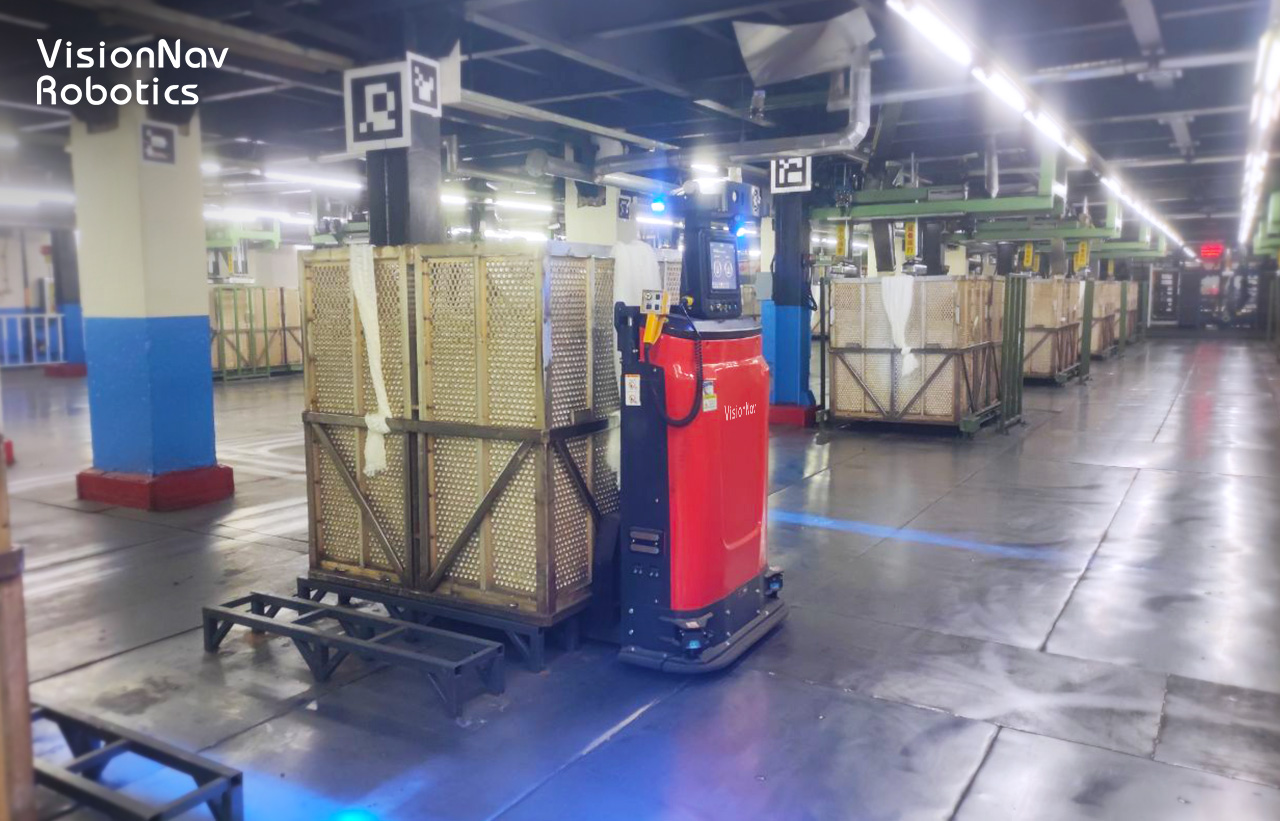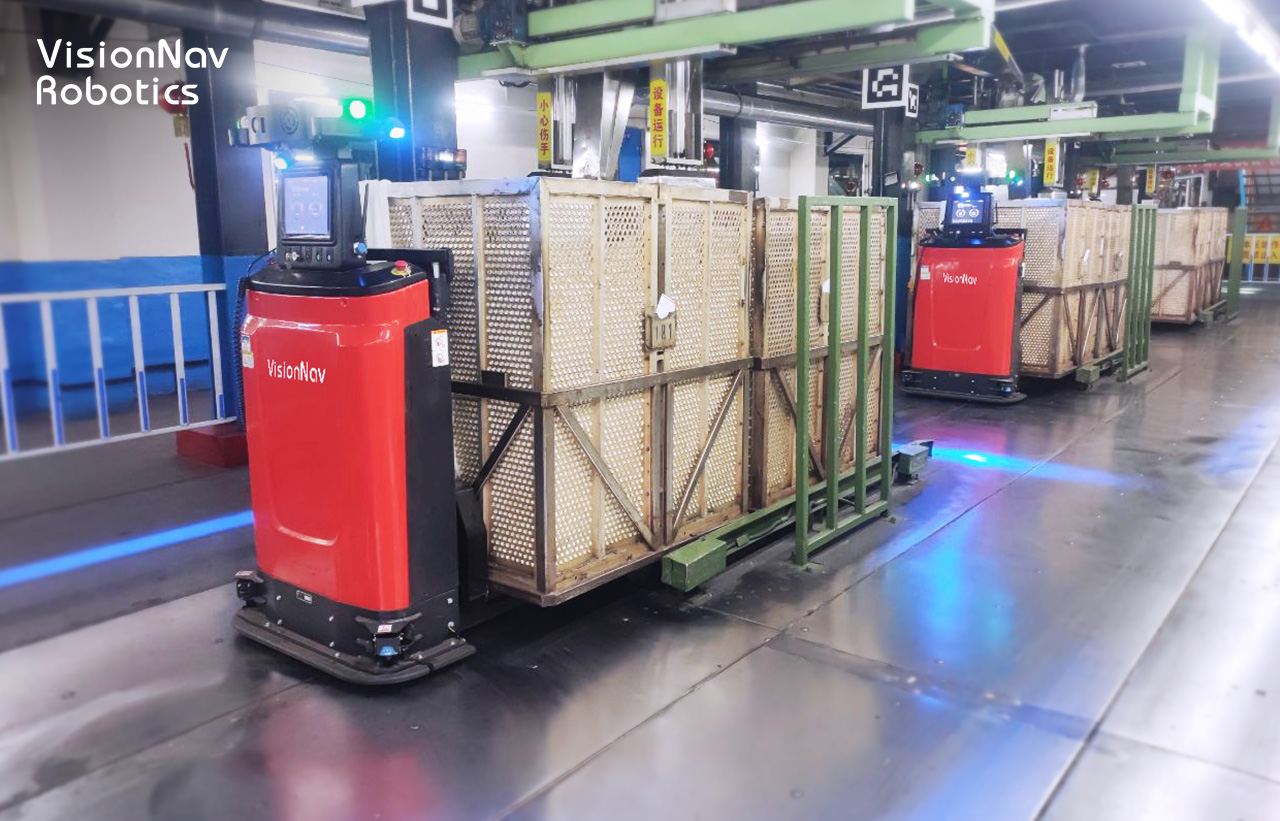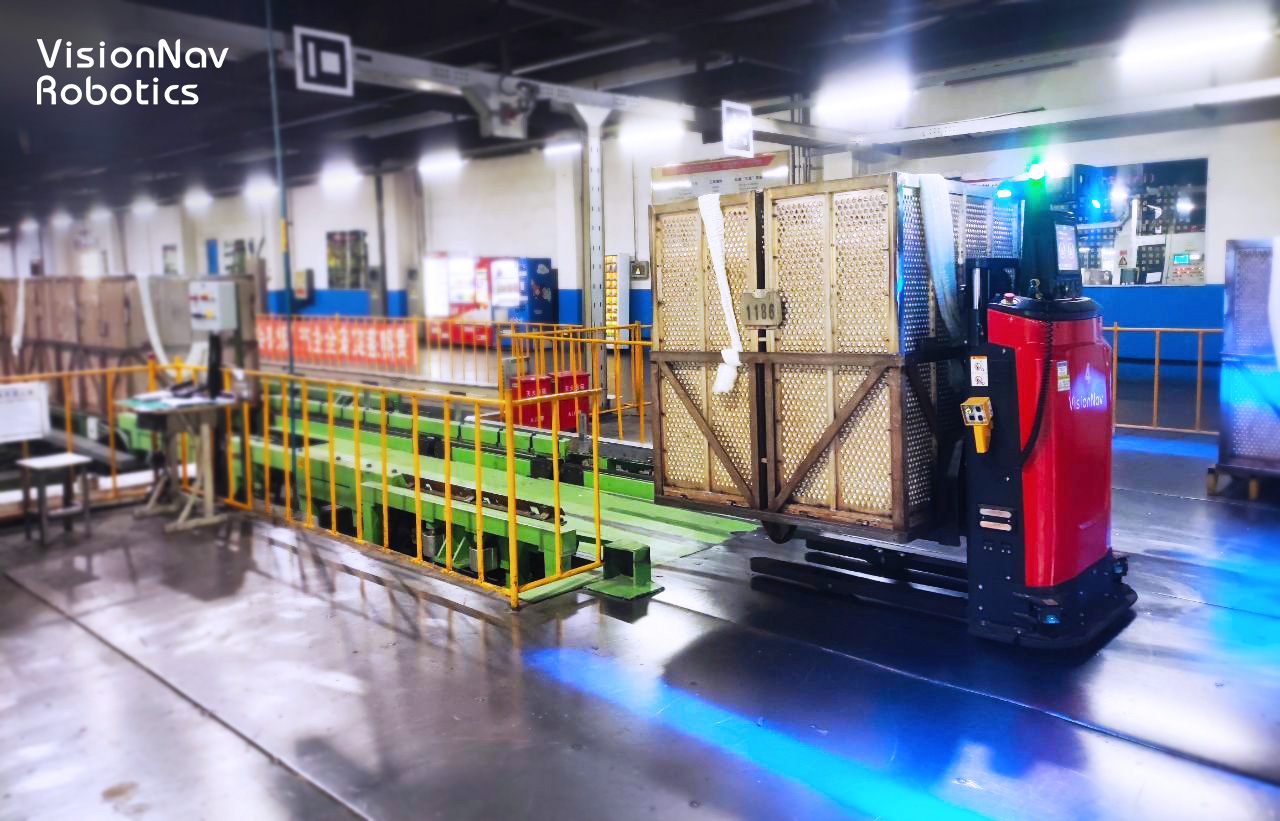China's chemical fiber manufacturing industry started in the 1950s. Now, China has become the world's largest chemical fiber producer, accounting for 73 percent of the production worldwide (Statista, 2021). In recent years, affected by the epidemic, economic, and other factors, the chemical fiber industry is facing more risks and challenges with a recession of the economy and operation quality year-on-year. How to improve the logistics efficiency of the chemical fiber industry? Recently, VisionNav Robotics, the global supplier of autonomous industrial vehicles, helped chemical fiber companies to upgrade their production logistics with the aim to achieve high efficiency and high-quality production.
DIFFICULTIES
1. Multiple Production Lines. The project site has six tow feeding points, three setting pot feeding points, and two empty-material truck recycling points. The autonomous forklifts need to shuttle between multiple production lines in a man-machine work condition.
2. Unstable Material Management. Material matching information management from the tow feeding point to the setting pot feeding point relies on manual processing, which consumes the workforce. Once the material information management is chaotic, the production workflow will be affected.
3. Limited Charging Piles. Only two charging piles are available onsite. In order to prevent the forklifts from queuing up for charging, resulting in low work efficiency, it is necessary to formulate an effective charging strategy.

Autonomous Forklift Work Scene
SOLUTION
VisionNav deploys 6 Slim-Series AGVs + central control system to connect to the tow unloading point, setting pot feeding point, and empty-material truck recycling point on site, which can efficiently assign tasks according to the production rhythm with quicker response to the complex environment of the project site.
Formulate various charging strategies such as charging at idle times, low-battery charging, and fixed cycles. The forklifts can charge at a specified time according to their schedule and at the time when charging piles are available instead of charging themselves only after their power is lower than the working power (the standard default power is less than 30%). The strategy can improve the operational efficiency of the autonomous forklift and avoid the chaos of multiple forklifts queuing up for one charger.

Multi-vehicle Collaborative Operation
PROJECT WORKFLOW
Tow Unloading: After the tow unloading is completed and the wire cutting is finished manually, the task will be sent to the autonomous forklift through the central control system. The forklift, then, will be dispatched to the tow cutting point to pick up the full-material truck and handle it to the buffer area or directly to the feeding point of the setting pot according to the demand of the production line.
Setting Pot Loading: Autonomous forklifts transport the full tow truck from the buffer area or the tow unloading point directly to the setting pot loading point, where the forklifts will scan the QR code on the full-material truck at the loading point. After comparing the material information, the full-material truck enters the setting pot for processing.
Empty-material Truck Supplement: The empty-material truck recycling point adopts autonomous scanning. After the code scanning process, the autonomous forklift will pick up the scanned empty-material truck and transport it to the tow production line, waiting for the tow to be loaded.

Docking Conveyor
Logistics Better

Docking Conveyor
Better Production Arrangement with Lower Cost: Multiple autonomous forklifts work together 24 hours a day to meet production rhythms on time with the aim to achieve high efficiency and high-quality production
Intelligent Management: The central control system is connected to the client's system allowing real-time tracking and providing feedback on production logistics information onsite, thus to logistics better with intelligent material loading and unloading workflow.
Business Contact
Media Contact
Iris
Marketing Manager